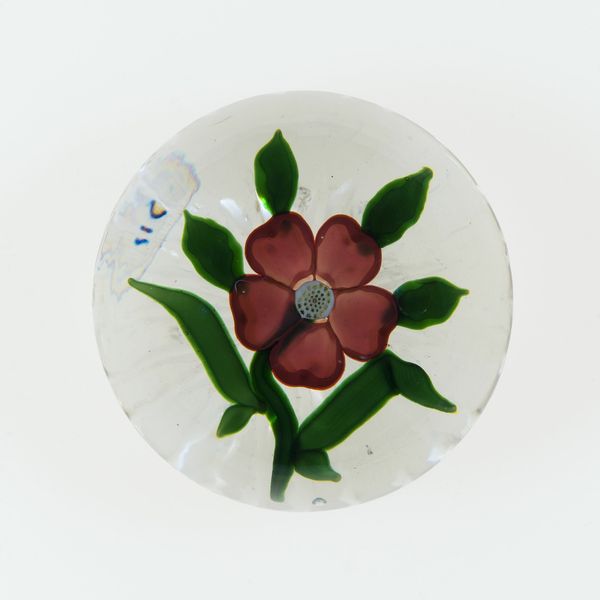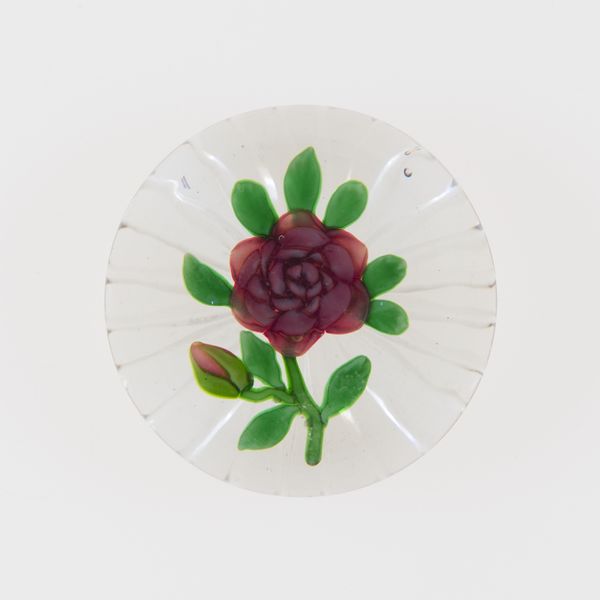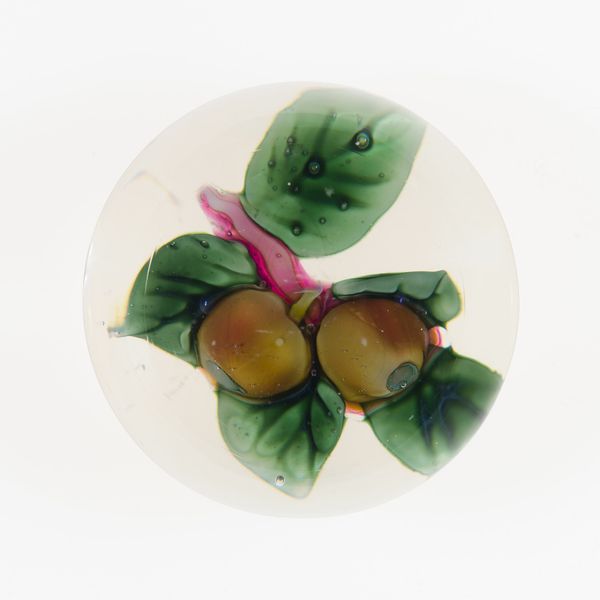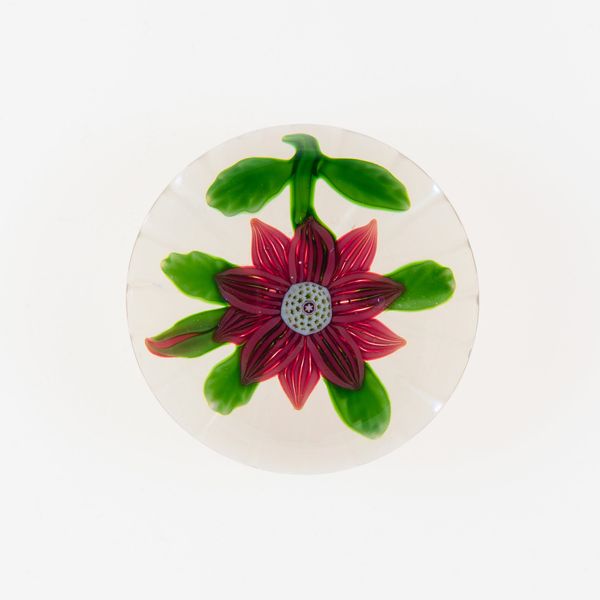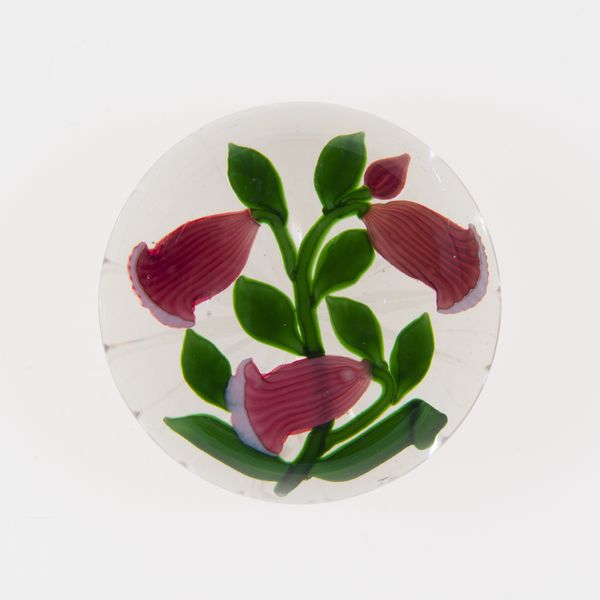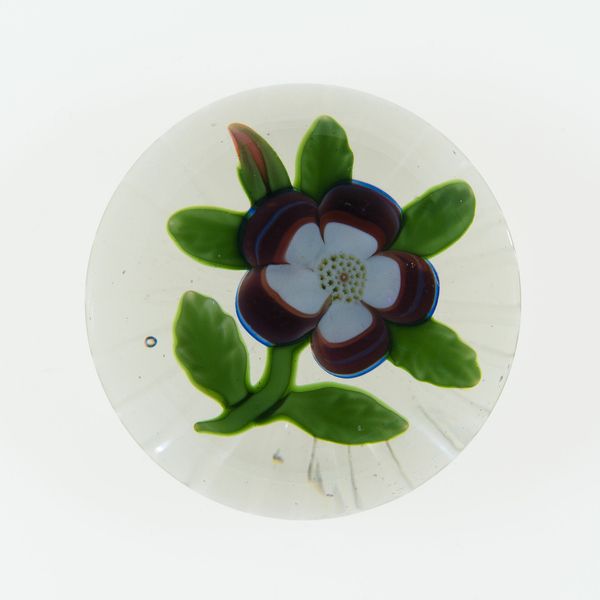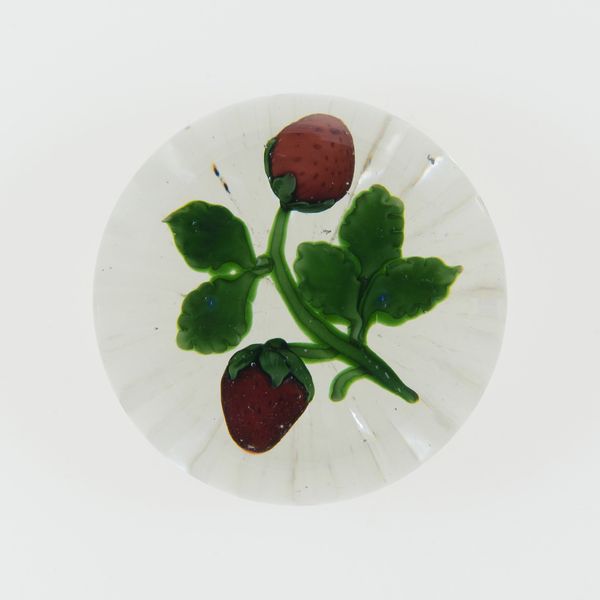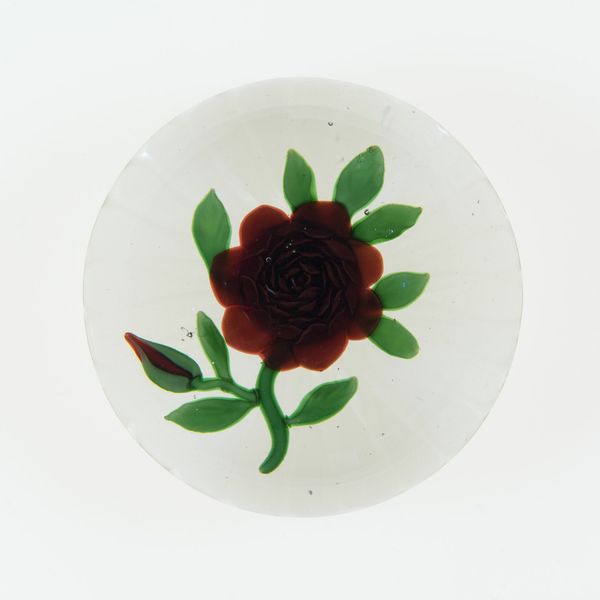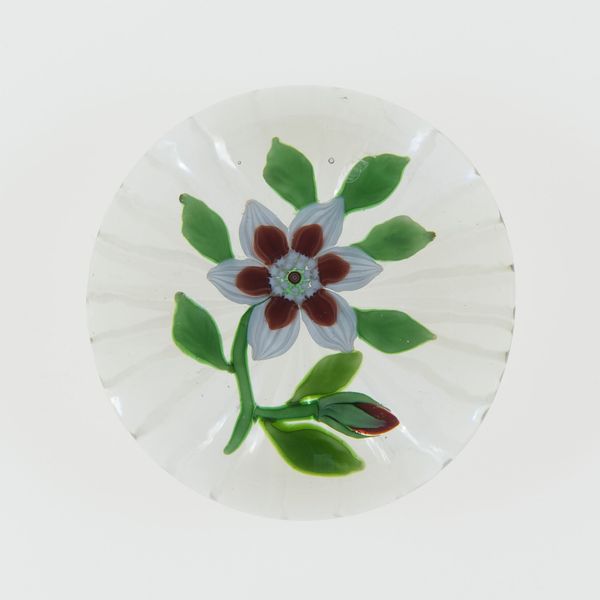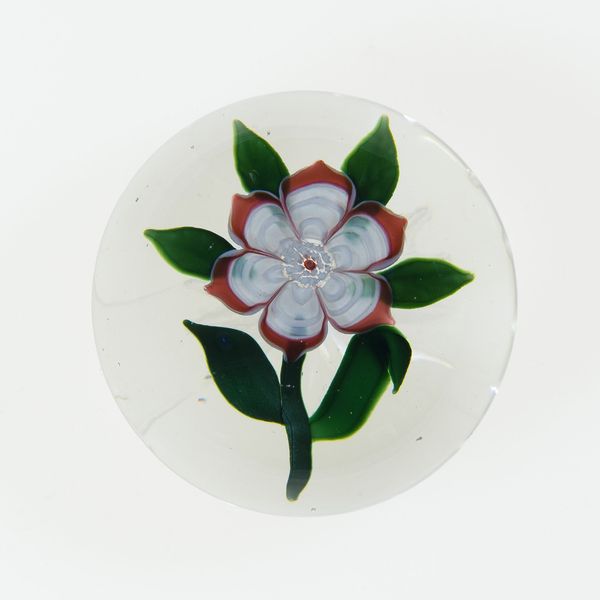
paper, glass
#
paper
#
glass
Dimensions: Diam. 5.1 cm (2 in.)
Copyright: Public Domain
Curator: Here we have a glass paperweight created by the Baccarat Glassworks between 1845 and 1860. The object resides in the collection of The Art Institute of Chicago. Editor: How lovely, and such a quaint item. The color palette is vibrant—I find the deep red petals of the flower quite striking against the translucent glass. It seems almost like a miniature world encapsulated. Curator: Indeed. Examining the millefiori technique up close reveals the incredible craftsmanship. Consider the laborious process of creating each glass element, fusing them together, and then encasing the floral design. It really begs the question of what this piece signifies, as each labor division specializes its making to deliver an element only to see the transformation happening, and not seeing the result. The object is made to serve another object. How about that? Editor: Absolutely. We must consider the historical context here as well. In mid-19th century France, paperweights like these were popular desk accessories in a society becoming increasingly bureaucratic. They also offered bourgeois women another opportunity to assert themselves in positions where their roles and identities are performed and materialized. Perhaps this paperweight embodies a desire to impose order onto the chaos, perhaps as an element where its mere being means that all parts had to do exactly what the process implied. I’d be intrigued to consider what the use of flora means in this piece. Curator: The specific choices of imagery employed always fascinate me. The bloom seems very traditional in form—in fact it mimics printed motifs of the era, yet there's an argument for subversion here. Consider how this flower never truly decays in the traditional sense. Editor: Precisely. One might see a commentary on preservation or the romanticization of nature, perhaps even echoing back to the vanitas movement and thinking about what we choose to fixate in place and fix in time. Curator: So while the object appears frivolous on the surface, one discovers an intensive labor force in producing the artwork that’s full of societal implications. Editor: True. A potent reminder of how everyday objects can serve as significant cultural markers.
Comments
No comments
Be the first to comment and join the conversation on the ultimate creative platform.
